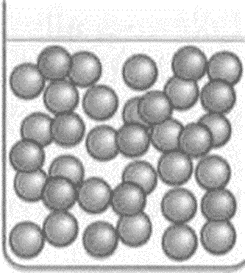The water cycle is The natural cycle of evaporation of water and subsequent condensation and precipitation as rain and snow, which assure that the level of water in the environment remains constant. For this balance to be sustained, different processes take places at different parts of the environment.
1. Aquifers
Much less obvious than surface water, which we see in streams, lakes, and ponds, is groundwater, which occurs in aquifers, i.e. permeable, saturated, underground layers of rock, sand, and gravel. In many areas, groundwater is the most important reservoir of water. The upper, unconfined portion of the groundwater constitutes the water table, which flows into streams and is partly accessible to plants; the lower confined layers are generally out of reach, although they can be “mined” by humans. The water table is recharged by water that percolates through the soil from precipitation as well as by water that seeps downward from ponds, lakes, and streams. The deep aquifers are recharged very slowly from the water table.
Groundwater flows much more slowly than surfacewater, anywhere from a few millimetres to a metre or so per day. Rural areas tend to depend almost exclusively on wells to access groundwater, and its use is growing at about twice the rate of surface water use.
2. Evaporation
When liquid water changes its state to a gas it forms vapour and the process is called evaporation. The water vapour produced by evaporation spreads out through the surrounding air. All over the Earth’s surface there are large water surfaces from which water will evaporate. Seas, rivers, lakes and ponds all provide a source of water vapour in the air through evaporation. Water will also evaporate from moist soils.
It is worth to note that water is a waste product in respiration. This is excreted from the body as water vapour in exhaled breath. All living things using aerobic respiration excrete water vapour. The plants transpire, with water vapour being released from their leaves. These three processes – animal respiration, plant transpiration, and natural evaporation – are the main sources of water vapour in the air. Between them, they provide a very variable quantity of air moisture. How much moisture is in the air depends on:
• temperature
• the saturation level of the air.
Condensation
When water vapour is cooled, it will condense back to a liquid. Fog, mist and frost are all caused by a drop in air temperature causing condensation of water vapour. There is a limit to the amount of water vapour that a given quantity of air will hold. That limit varies with the temperature of the air. Saturated cold air holds less water vapour than saturated warm air.
Humidity is a measure of how much water vapour the air is holding. Dry air has a very low humidity. When the humidity gets very high (at the saturation level at that temperature) the air cannot hold more water. Under these conditions, a small fall in the temperature means that the air is oversaturated. Water condenses out – normally as rain.
Winds blowing across the sea will collect water vapour evaporating from the surface. When these moist winds meet the land they may be forced to rise. As they do, they cool with altitude, and rain results. The rain falls on the ground and drains into rivers. It eventually runs out to sea. This is the basis of the water cycle.
The rate at which water evaporates from a water surface depends on temperature and on air movement: the warmer the water, the quicker it will evaporate. Still air can quickly become saturated; moving air carries the water vapour away, making saturation far less likely.
 |
| The water cycle |
Precipitation
Warm winds blowing over warm seas will become very moist. When they meet land they may cause very heavy rainfall (the monsoon winds in the tropics, for example). Cold winds blowing over cool seas will be relatively dry, and produce much less rainfall than a monsoon wind. If the winds are blowing over land (not sea), their humidity will depend on how much water is in and on the land. Winds blowing over the Sahara Desert, for example, are very hot and dry. There is very little water in the Sahara Desert.
 |
| The water cycle summary |
Breaking the Water Cycle
In dense forest ecosystems such as tropical rainforests, more than 90% of the moisture in the ecosystem is taken up by plants and then transpired back into the air. Because so many plants in a rainforest are doing this, the vegetation is the primary source of local rainfall. In a very real sense, these plants create their own rain: the moisture that travels up from the plants into the atmosphere falls back to earth as rain.
Where forests are cut down, the organismic water cycle is broken, and moisture is not returned to the atmosphere. Water drains away from the area to the sea instead of rising to the clouds and falling again on the forest. As early as the late 1700s, the great German explorer Alexander von Humbolt reported that stripping the trees from a tropical rainforest in Colombia prevented water from returning to the atmosphere and created a semiarid desert.







